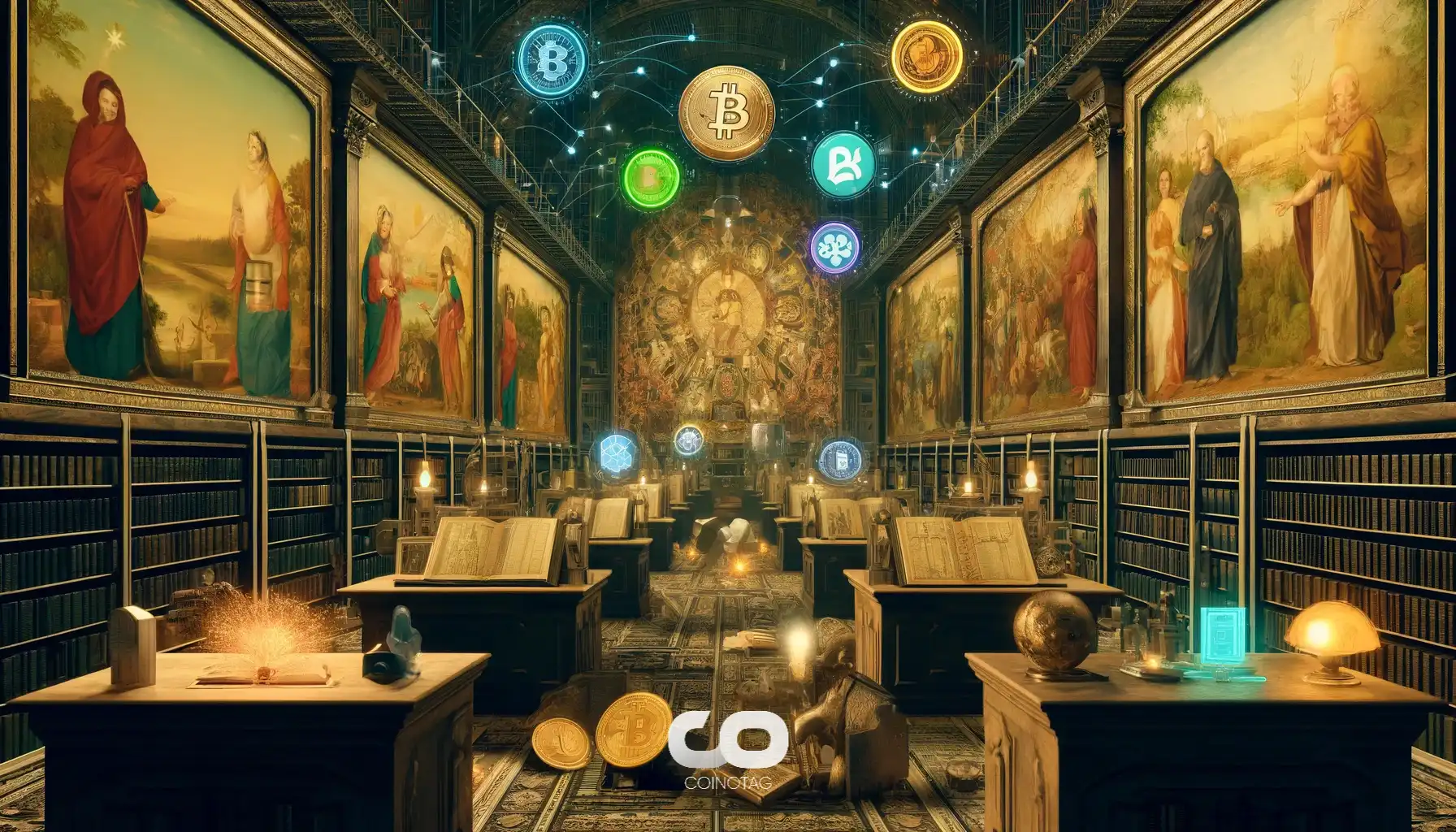1. What Is Aptos?


Aptos is a Layer 1 Proof-of-Stake (PoS) blockchain that employs a novel smart contract programming language called Move, a Rust-based programming language that was independently developed by Meta (formerly Facebook)’s Diem blockchain engineers.
Aptos’s vision is a blockchain that brings mainstream adoption to web3 and empowers an ecosystem of DApps to solve real-world user problems.
The PoS blockchain can achieve a theoretical transaction throughput of over 150,000 transactions per second (tps) through parallel execution.
In March 2022, Aptos raised $200 million in a seed round led by the venture capital firm Andreessen Horowitz (a16z). Other crypto heavyweights like Tiger Global and Multicoin Capital took part in the funding round. Fast forward to July, the startup raised another $200 million in a Series A round with participation from Dragonfly, Apollo Global, Franklin Templeton, Animoca, Jump Crypto and others.
Two months later, Binance Labs made a strategic investment of an undisclosed amount in Aptos.
On Oct. 18, 2022, Aptos announced the mainnet launch, while the Aptos genesis occurred on Oct. 12, 2022.
2. Who Are the Founders of Aptos?


Aptos is the brainchild of Mo Shaikh and Avery Ching, both former employees of Meta. Mo, who is the current CEO of the company, is a founder with years of multinational financial services and blockchain/crypto experience. According to his LinkedIn profile, he specializes in scaling products and has experience in the private equity and venture capital markets.
Ching, on the other hand, is the CTO of Aptos. He is a software engineer and was one of the principal software engineers at Meta.
The duo worked together on the Diem blockchain project at Meta. Shaikh and Ching decided to join forces to create Aptos Labs when the Diem project was discontinued in January 2022. It, therefore, comes as no surprise that Aptos employs some of the technicalities of Diem.
Other members of the Aptos team include researchers, designers, and engineers from Diem.
3. What Makes Aptos Unique?


For a start, the Aptos team claims that its network can process over 150,000 tps. By comparison, Ethereum’s mainnet tps is around 12 to 15.
This high transaction throughput is possible through a parallel execution engine (Block-STM) — a byzantine fault-tolerant (BFT) PoS consensus mechanism. For context, most blockchains execute transactions sequentially, which means that a single failed transaction or high demand on the network could hold up the entire chain.
In the case of Aptos, all transactions are processed simultaneously and validated afterward. Failed transactions are either re-executed or aborted, thanks to the blockchain’s software transactional memory libraries, which spot and manage conflicts.
Aptos is built using Move, a new smart contract programming language that claims to offer advantages to Solidity, the EVM-based programming language. This includes blockchain commands that can be easily verified, modification of private key and modular design of Aptos.
New use cases can be realized through Aptos’ upgradeability and configurability, while horizontal throughput scalability — through the natively-implemented sharding feature — provides a better user experience.
4. How Much Aptos is in Circulation?


APT is the native currency of the Aptos blockchain. It has an initial total supply of 1 billion and at the time of writing, its circulating supply is 130 million APT.
The distribution is as follows: Community (51.02%); Core Contributors (19.00%); Foundation (16.50%); Investors (13.48%).
Under the Community allocation, around 80% are held by the Aptos Foundation and the remaining by Aptos Labs. This will be used to support community growth and Aptos Foundation initiatives, and the remainder will be unlocked monthly over the next ten years.
Investors and core contributors are subjected to a four-year vesting schedule from mainnet launch. The Aptos team announced a token airdrop of 20 million APT tokens to early testnet users on Oct. 19, 2022.
For a summary of Aptos tokenomics, refer here.
5. What Is Aptos Bridge?


On-chain user application protocol called LayerZero Labs launched the Aptos Bridge on October 19, 2022.
The blockchain bridge will allow users to transfer ETH, USDC, and USDT from Ethereum, BNB Chain, Polygon, Avalanche, and Optimism to Aptos.
6. How Is the Aptos Network Secured?


Aptos uses two consensus protocols – Proof-of-Stake and AptosBFT.
AptosBFT is quite similar to DiemBFT, originally developed for Diem. “BFT '' means ‘Byzantine Fault-Tolerant,’ and a network is said to be Byzantine fault-tolerant if it can continue to operate normally even if some of its members go offline or turn malicious.
AptosBFT is a custom-made consensus algorithm based on the HotStuff protocol. While there are a lot of background technicalities around how the protocol secures the network, the algorithm analyzes the on-chain state and automatically updates leader rotations to adjust for non-responsive validators without human intervention.
7. Where Can I Buy Aptos?


The APT token can be purchased and traded on a number of exchanges, including Binance, Huobi, KuCoin, Coinbase and more.
8. Related Pages:


Learn more about Sui — a Move-based layer-1 blockchain built by former Diem engineers too.
Read about the difference between Modular and Monolithic blockchains.
Want to keep track of APT price live? Download the CoinMarketCap mobile app!
Curious about the crypto space? Read our educational section — Alexandria.
9. Aptos Mainnet Launch


As already mentioned, despite raising millions of dollars from investors, Aptos did not launch its mainnet until October 2022. Prior to the mainnet launch, its testnet campaign called “Aptos Incentivized Testnet (AIT)” was running since May.
The testnet was divided into four stages – AIT1, AIT2, AIT3, and AIT4. The aim of the campaign was to invite and incentivize developers, node operators, and auditors to launch applications and stress-test the network, ahead of the mainnet launch.
On September 9, 2022, the network completed its AIT3 campaign, paving a way for the final testnet. Through the series of testnets, Aptos onboarded over 100 projects, including Solrise Finance, PayMagic, Pontem Network, and MartianDAO.
On Oct. 18, 2022, Aptos went live with its mainnet launch, making it the first blockchain to debut on Move technology. At the time this content was published, the mainnet was using the latest version of AptosBFT (version 4), which leverages a Byzantine Fault Tolerance (BFT) consensus protocol. However, the company is already working on AptosBFT (version 5).
10. What is Blockchain?


Blockchain is a decentralized and distributed ledger technology that securely records transactions across multiple computers in a verifiable and permanent way. It forms the underlying technology for cryptocurrencies like Bitcoin and enables transparency, security, and immutability.
11. What is Cryptocurrency?


Cryptocurrency is a digital or virtual form of currency that uses cryptography for security. It operates on decentralized networks, typically based on blockchain technology, and facilitates secure and transparent peer-to-peer transactions.
12. What is Bitcoin?


Bitcoin is the first and most well-known cryptocurrency, created in 2009 by an anonymous person or group known as Satoshi Nakamoto. It operates on a decentralized peer-to-peer network and is used for secure, transparent, and censorship-resistant transactions.
13. What is the difference between Bitcoin and Altcoins?


Bitcoin is the original and most widely recognized cryptocurrency, while altcoins refer to any other cryptocurrencies besides Bitcoin. Examples of altcoins include Ethereum, Ripple (XRP), Litecoin (LTC), and many others.
14. What is Staking?


Staking involves participants locking up a certain amount of cryptocurrency in a wallet to support the operations of a blockchain network. It is commonly associated with proof-of-stake (PoS) and delegated proof-of-stake (DPoS) consensus mechanisms, where participants receive rewards for helping secure the network.
15. How Can I Stake Cryptocurrency?


To stake cryptocurrency, you typically need to choose a platform or network that supports staking. Transfer your tokens to a compatible wallet, follow the staking instructions provided by the platform, and lock up the desired amount of cryptocurrency. Once staked, you may start earning rewards.
16. What Are Staking Rewards and How Are They Calculated?


Staking rewards are incentives provided to participants who lock up their cryptocurrency to support the network. The amount of rewards varies and is influenced by factors such as the network's inflation rate, the total amount staked, and the specific rules of the staking protocol.
17. Can I Unstake My Cryptocurrency at Any Time?


The ability to unstake and withdraw your cryptocurrency depends on the specific staking protocol and network. Some platforms may have lock-up periods or unbonding periods during which your staked tokens are inaccessible. Always check the terms and conditions of the staking service.
18. What are the Risks of Staking?


Staking comes with risks, including the potential loss of staked funds if a participant behaves maliciously or fails to fulfill their responsibilities. Market volatility can also impact the value of staked tokens. It's crucial to thoroughly research the staking protocol and understand the associated risks.
19. Can I Lose Money by Staking?


While staking is designed to be a rewarding activity, there is a risk of losing money, especially if the value of the staked cryptocurrency decreases or if the staking protocol encounters security issues. It's important to consider both the potential rewards and risks before participating in staking.




